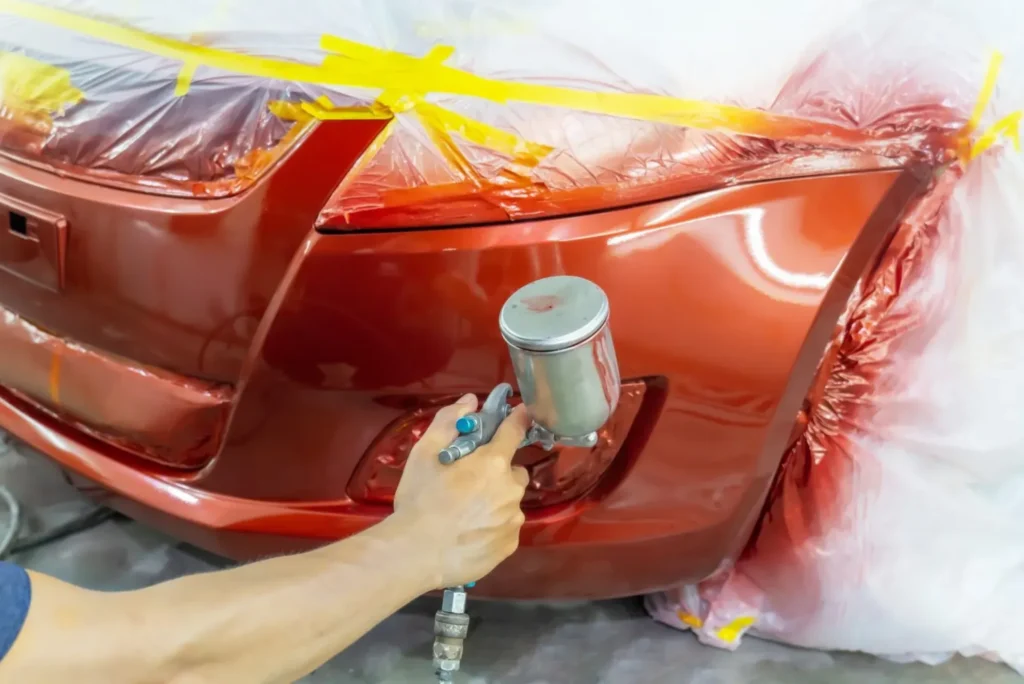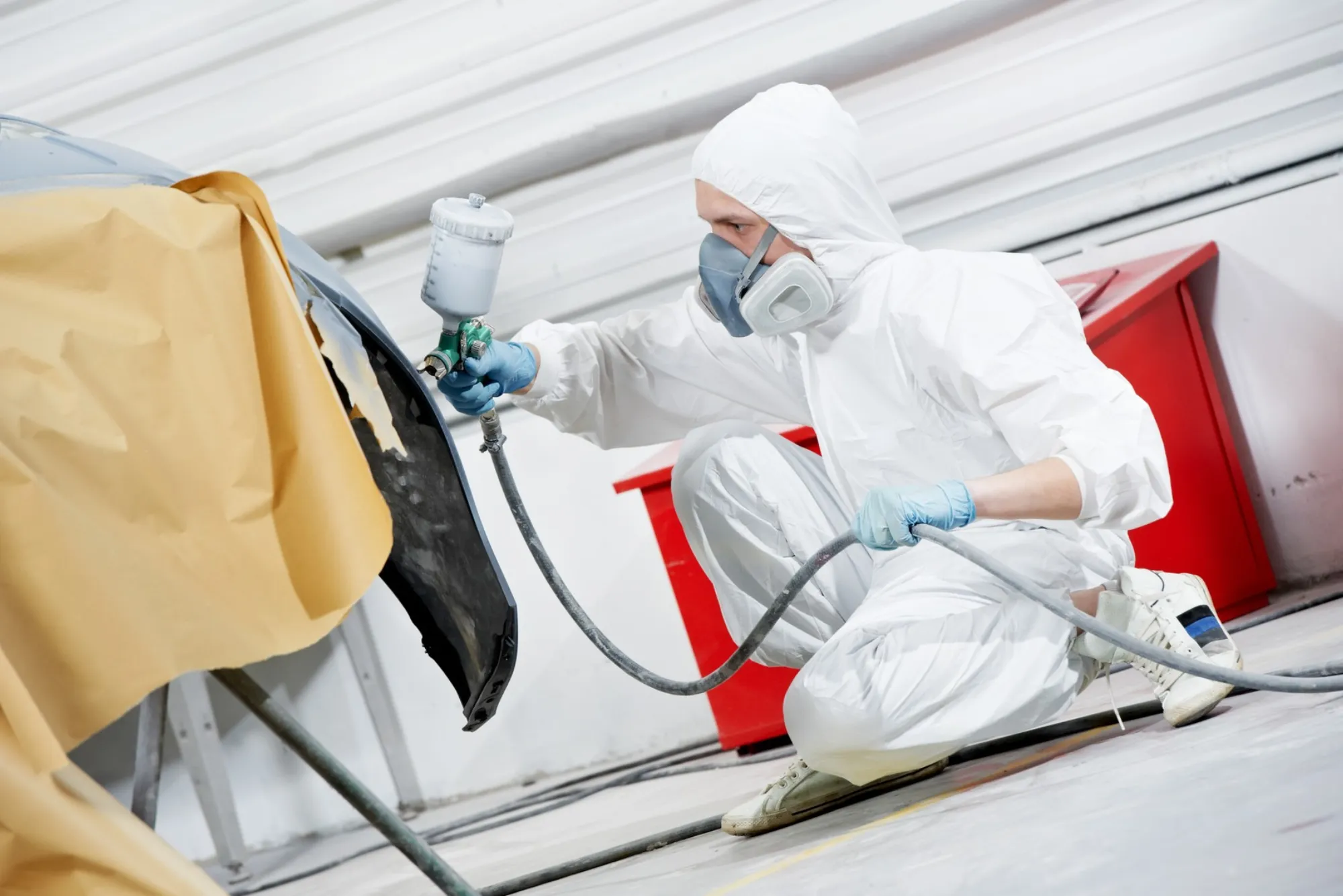Painting a car is a meticulous process that requires the right conditions for a flawless finish. One common question among car enthusiasts and professionals is, “Car paint can you do it on a hot surface?” While it might seem like a minor detail, the surface temperature can significantly influence the paint job’s success.
The Importance of Surface Temperature in Car Painting

Surface temperature plays a crucial role in the success of car paint projects. Whether applying a fresh coat or performing a touch-up, the temperature of the car’s surface significantly impacts the paint’s adhesion, finish, and longevity. Understanding this factor ensures professional-quality results while avoiding costly rework.
Adhesion and Coating Performance
Paint adherence to the car’s surface depends on the temperature. If the surface is too cold, the paint may fail to bond properly, leading to flaking or peeling over time. On the other hand, excessive heat can cause the paint to dry too quickly, resulting in uneven layers or visible imperfections. Maintaining an optimal temperature ensures the paint forms a strong bond, creating a smooth and durable finish.
Avoiding Moisture and Defects
Temperature fluctuations can cause condensation on the surface, which interferes with paint application. Painting over a moist surface leads to bubbling, streaking, or an uneven appearance. By controlling surface temperature, professionals can avoid these issues and achieve a flawless coat.
Environmental and Product Compatibility
Each paint product has specific temperature guidelines provided by manufacturers. For instance, most automotive paints work best when the surface temperature is between 60°F and 80°F. Staying within this range not only ensures compatibility but also prevents curing delays or discoloration.
Professional Techniques
Automotive experts use tools like infrared thermometers to measure surface temperatures accurately. Adjusting environmental conditions, such as using heat lamps or controlled paint booths, further helps maintain the ideal temperature.
In conclusion, surface temperature is a vital parameter in car painting that directly impacts the final results. Proper monitoring and adjustments help achieve a professional finish, ensuring long-lasting and visually appealing paintwork.
The temperature of a car’s surface plays a critical role in determining how well the paint adheres and cures. When a surface is too hot, the paint may dry too quickly, leading to streaks, uneven application, or even peeling. Additionally, high temperatures can cause bubbling or blistering, ruining the smooth appearance. Understanding these potential challenges is crucial for achieving a high-quality finish.
Effects of Heat on Car Paint Application

Painting on a hot surface can create numerous problems, including faster drying times that may result in uneven coats. The heat can also cause the metal to expand, which could lead to cracking or peeling once the surface cools. Furthermore, heat may accelerate undesirable chemical reactions within the paint, potentially affecting its durability and appearance.
Ideal Conditions for Painting a Car
For optimal results, car painting should be done in specific environmental conditions. The ideal temperature range is between 60°F and 80°F, where the paint can cure evenly without being affected by excessive heat or cold. Humidity levels also play a role, with moderate levels ensuring that moisture does not interfere with the paint. Painting in a shaded area or a controlled environment helps maintain these conditions and minimizes the risk of heat-related issues.
Challenges of Painting on a Hot Surface
The question “Car paint can you do it on a hot surface?” is often answered with caution due to the challenges it presents. Hot surfaces can cause paint to evaporate too quickly, reducing its workability and making it difficult to achieve a smooth finish. The expansion and contraction of metal due to temperature changes can further compromise the paint’s adhesion, resulting in cracks or chips over time.
Overcoming the Challenges of Hot Surface Painting
While it is best to avoid painting on a hot surface, certain measures can make it manageable if unavoidable. Cooling the surface with a damp cloth or water spray before application can help. Using specialized heat-resistant primers and slow-drying paints ensures that the paint adheres properly and cures evenly. Painting in thin layers and allowing sufficient drying time between coats can also minimize the impact of heat.
Step-by-Step Process for Painting in Hot Conditions
Preparation is key to achieving a good result when painting under less-than-ideal conditions. Begin by cleaning and sanding the car’s surface to ensure it is free of debris. Apply a heat-resistant primer to create a stable base for the paint. Use a spray gun to apply thin, even layers of paint, keeping the nozzle at a consistent distance from the surface. Finally, allow the paint to cure in a shaded or temperature-controlled area to prevent defects.
Common Questions About Hot Surface Car Painting
Car enthusiasts often ask, “Car paint can you do it on a hot surface?” along with related queries. For example, many wonder whether painting in direct sunlight is feasible. The answer is that direct sunlight can exacerbate issues like bubbling and uneven drying, making it unsuitable for painting. Similarly, the impact of surface temperature on paint adhesion and the importance of humidity are frequent concerns.
Role of Visual Guides and FAQs in Understanding the Process
Visual aids like an Image Pack can simplify complex processes and enhance understanding. For example, step-by-step images of the car painting process can demonstrate the effects of temperature and the proper techniques for managing heat. Including a detailed FAQ section can further address common concerns and provide practical solutions.
Importance of Proper Planning in Hot Conditions
When working in hot environments, planning is crucial to mitigate potential issues. Choose the right materials, such as paints and primers designed for high temperatures, and prepare the workspace to minimize exposure to heat. A well-executed plan ensures that the final result meets professional standards, even under challenging conditions.
Painting a car on a hot surface is a delicate task that requires careful consideration and preparation. The answer to “Car paint can you do it on a hot surface?” lies in understanding the challenges and implementing strategies to overcome them. By working in shaded environments, using appropriate materials, and following proper techniques, it is possible to achieve a smooth and durable finish despite the heat.
Incorporating tools like an Image Pack, referencing a detailed guide, and exploring an FAQ section can make the process easier to understand and execute. With the right approach, even painting on a hot surface can yield impressive results.










